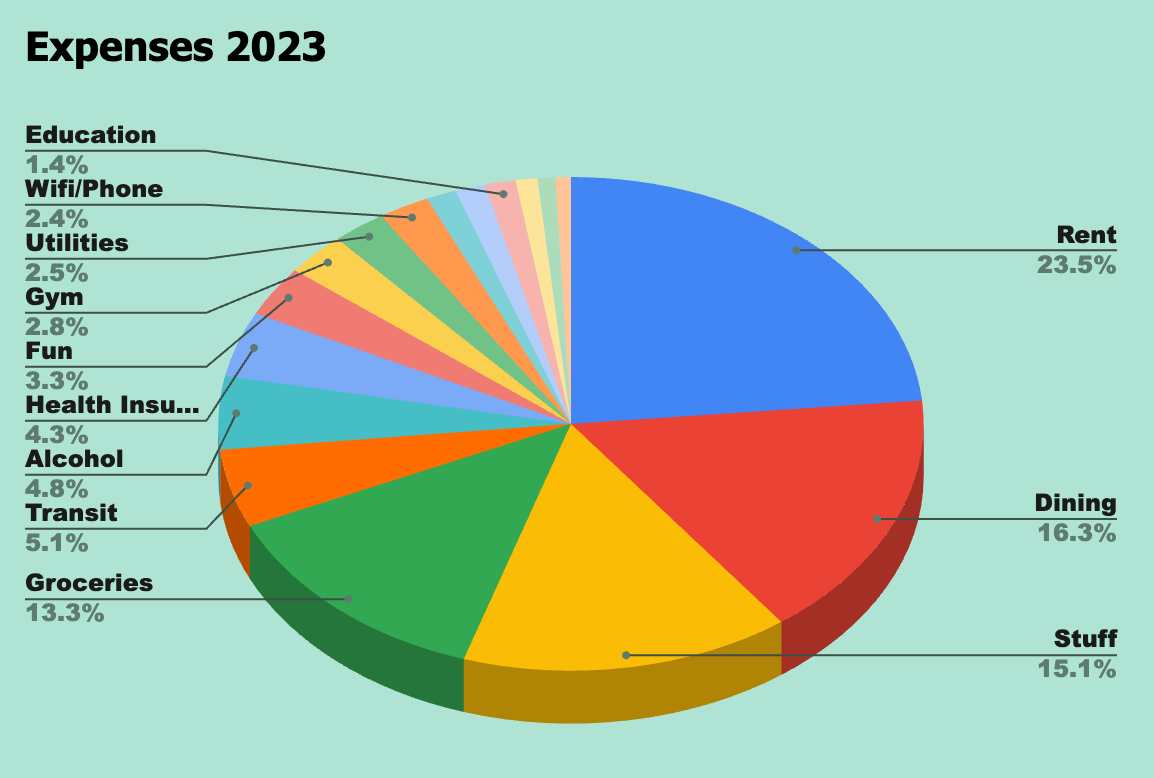The Emergence of Cryptocurrency Exchanges in Developing Economies
In
recent years, the global financial landscape has witnessed a transformative shift with the emergence of cryptocurrency exchanges in developing economies. This phenomenon marks a pivotal moment as these regions harness digital currencies to redefine their economic structures. Cryptocurrency exchanges serve as catalysts for financial inclusion, offering accessible and efficient platforms for individuals to participate in the digital economy. As traditional banking systems face limitations, these developing economies leverage decentralized technologies to empower their populations with newfound financial opportunities. This evolution not only fosters innovation and investment but also addresses longstanding issues such as limited access to banking services. The growing prominence of Cryptocurrency Exchange Development in the economies signifies a paradigm shift towards a more inclusive and technologically advanced financial future.
As traditional banking systems face limitations, these developing economies leverage decentralized technologies to empower their populations with newfound financial opportunities. This evolution not only fosters innovation and investment but also addresses longstanding issues such as limited access to banking services. The growing prominence of Cryptocurrency Exchange Development in the economies signifies a paradigm shift towards a more inclusive and technologically advanced financial future.
Table of Content
What is Cryptocurrency Exchange Development?
The Rise of Cryptocurrency in Developing Economies
How do cryptocurrency exchanges work?
Key Features of Cryptocurrency Exchanges in Developing Economies
Impact of cryptocurrency regulations on exchanges
Future trends in technology for cryptocurrency exchanges
Conclusion
What is Cryptocurrency Exchange Development?
Cryptocurrency exchange development involves creating online platforms that facilitate the buying, selling, and trading of digital assets such as Bitcoin, Ethereum, and other cryptocurrencies. These exchanges act as intermediaries, providing users with a secure and user-friendly environment to conduct transactions. The development includes building features like order matching, wallet integration, and robust security measures.
Customization options and adherence to regulatory standards are essential aspects. Successful cryptocurrency exchange development ensures a seamless and efficient marketplace for users to engage in digital asset transactions, contributing to the broader ecosystem’s growth and adoption.
The Rise of Cryptocurrency in Developing Economies
The rise of cryptocurrency in developing economies reflects a transformative shift in financial paradigms. Digital currencies, like Bitcoin and Ethereum, offer inclusive and accessible alternatives to traditional banking, fostering financial inclusion. Empowering individuals with limited access to banking services, cryptocurrencies provide opportunities for economic growth and investment.
The decentralized nature of these digital assets addresses challenges in traditional financial systems, enabling users in developing economies to participate in the global economy. As adoption continues, the rise of cryptocurrency emerges as a catalyst for economic empowerment, reshaping financial landscapes and contributing to a more inclusive and technologically advanced future.
How do cryptocurrency exchanges work?
Cryptocurrency exchanges facilitate the buying, selling, and trading of various digital assets, allowing users to exchange one cryptocurrency for another or convert cryptocurrencies into traditional fiat currencies like USD or EUR. Here’s a step-by-step explanation of how cryptocurrency exchanges generally work:
❂ User Registration:
Users create accounts on the exchange platform by providing necessary information, such as email addresses, passwords, and in some cases, identity verification documents.
❂ Deposit Funds:
To start trading, users deposit funds into their exchange accounts. This can be done through various methods, including bank transfers, credit/debit cards, and cryptocurrency transfers.
❂ Order Placement:
Users can place different types of orders, such as market orders (executed immediately at the current market price) or limit orders (executed at a specific price or better). They can also use more advanced order types, such as stop-limit orders.
❂ Order Matching:
The exchange matches buy and sell orders based on the specified parameters. Market orders are matched with the best available prices in the order book, while limit orders are matched when the market reaches the specified price.
❂ Execution:
Once a buyer and a seller agree on a price, the trade is executed. The cryptocurrency is transferred from the seller’s account to the buyer’s account, and the corresponding funds are transferred in the opposite direction.
❂ Order Book:
The order book is a real-time, continuously updated list of buy and sell orders on the exchange. It displays the current market demand and supply, helping traders make informed decisions.
❂ Trading Pairs:
Cryptocurrencies are traded in pairs (e.g., BTC/USD or ETH/BTC), representing the exchange rate between the two assets. Traders can speculate on the price movements of the base currency (the first in the pair) against the quote currency (the second in the pair).
❂ Wallets:
Exchanges provide wallets for users to store their cryptocurrencies. These wallets can be hot (connected to the internet) for trading purposes or cold wallets (offline) for enhanced security.
❂ Withdrawals:
Users can withdraw their funds or cryptocurrencies from the exchange to their wallets. This process often involves security measures like two-factor authentication to protect user assets.
❂ Security Measures:
Cryptocurrency exchanges implement robust security measures to protect user accounts and funds. This includes encryption, two-factor authentication, withdrawal whitelists, and periodic security audits.
❂ Compliance and Regulation:
Many exchanges adhere to regulatory standards and comply with Know Your Customer (KYC) and Anti-Money Laundering (AML) regulations. This involves verifying the identity of users to prevent illegal activities.
Understanding how cryptocurrency exchanges work is crucial for anyone looking to participate in the cryptocurrency market. Different exchanges may have varying features, interfaces, and trading pairs, so users should choose a platform that aligns with their trading preferences and security requirements.
Key Features of Cryptocurrency Exchanges in Developing Economies
Cryptocurrency exchanges in developing economies often share key features that distinguish them from their counterparts in more established markets. These features cater to the unique challenges and opportunities present in developing regions. Here are some key characteristics:
♈ Financial Inclusion:
User Accessibility: Many exchanges prioritize user-friendly interfaces and mobile compatibility to reach a broader audience, including individuals with limited access to traditional banking services.
Low Entry Barriers: To encourage participation, these exchanges may have lower entry requirements and reduced fees, enabling a more inclusive financial ecosystem.
♈ Localized Payment Methods:
Diverse Payment Options: Recognizing the diversity of financial instruments in developing economies, Cryptocurrency Exchange Development often supports a variety of local payment methods, including mobile money, prepaid cards, and other alternative payment systems.
♈ Educational Initiatives:
User Education: Given the unfamiliarity with cryptocurrencies in these regions, exchanges may invest in educational programs and resources to help users understand the technology, risks, and benefits associated with digital assets.
♈ Customer Support:
Localized Support: Providing customer support in local languages and time zones is crucial for addressing the unique needs and concerns of users in developing economies. This may involve multilingual support teams and extended operating hours.
♈ Security Measures:
Robust Security Protocols: Recognizing the higher prevalence of cyber threats in developing regions, exchanges implement robust security measures, including two-factor authentication, encryption, and regular security audits, to safeguard users’ funds and data.
♈ Regulatory Compliance:
Navigating Regulatory Challenges: Cryptocurrency exchanges in developing economies must navigate evolving regulatory landscapes. Successful platforms work closely with local authorities to ensure compliance while advocating for clear and supportive regulatory frameworks.
♈ Liquidity Solutions:
Market-Making Services: To address potential liquidity challenges, exchanges may offer market-making services or partner with liquidity providers to ensure a more vibrant and stable trading environment.
♈ Innovative Features:
Adaptability: Developing economy exchanges may demonstrate a high degree of adaptability, quickly integrating new technologies and features to meet the evolving demands of their user base and the broader market.
♈ Community Engagement:
Community Building: Establishing a strong community presence is essential for building trust and fostering a sense of belonging. Exchanges often engage with users through social media, forums, and local events.
♈ Partnerships and Collaborations:
Strategic Alliances: Collaborations with local businesses, financial institutions, and government bodies can enhance the credibility and functionality of exchanges in developing economies.
By incorporating these features, cryptocurrency exchanges in developing economies aim to not only provide access to the world of digital assets but also contribute to economic development and financial inclusion in their respective regions.
Impact of cryptocurrency regulations on exchanges
Cryptocurrency regulations significantly impact exchanges, shaping the operational landscape and influencing user experiences. Regulatory frameworks vary globally, with some countries embracing digital assets, while others impose strict controls. Compliance measures often require exchanges to implement robust Know Your Customer (KYC) and Anti-Money Laundering (AML) procedures, enhancing security but potentially reducing user privacy.
Regulatory clarity can foster industry legitimacy and attract institutional investors, driving market growth. However, stringent regulations may hinder innovation and limit market access. Striking a balance between consumer protection and fostering innovation is crucial. Overall, the impact of cryptocurrency regulations on exchanges is a complex interplay between compliance, innovation, and market dynamics.
Future trends in technology for cryptocurrency exchanges
The cryptocurrency exchange landscape is continually evolving, driven by technological advancements and changing market dynamics. Several trends are expected to shape the future of technology for cryptocurrency exchanges:
༄ Decentralized Exchanges (DEXs):
The rise of decentralized exchanges is a significant trend. DEXs operate without a central authority, utilizing blockchain technology and smart contracts to facilitate peer-to-peer trading. This trend aligns with the core principles of decentralization and enhances security.
༄ Layer 2 Scaling Solutions:
To address scalability issues, cryptocurrency exchanges are exploring Layer 2 scaling solutions like sidechains and second-layer protocols. These solutions aim to increase transaction throughput while reducing fees and congestion on the main blockchain.
༄ Security Enhancements:
Continuous improvement in security measures is crucial to safeguarding user assets. Exchanges are expected to adopt advanced security technologies such as hardware security modules (HSMs), multi-signature wallets, and biometric authentication to enhance protection against hacking and fraud.
༄ Integration of Artificial Intelligence (AI) and Machine Learning (ML):
AI and ML technologies are increasingly being utilized for market analysis, fraud detection, and risk management. Cryptocurrency exchanges can leverage these technologies to provide more accurate price predictions, enhance user experience, and identify suspicious activities in real time.
༄ Tokenization of Assets:
The tokenization of traditional assets, such as real estate and stocks, is gaining traction. Cryptocurrency exchanges are likely to offer a broader range of tokenized assets, enabling fractional ownership and increased liquidity in traditional markets.
Staying at the forefront of these technological trends will be crucial for cryptocurrency exchanges to remain competitive, attract users, and adapt to the evolving landscape of the blockchain and cryptocurrency industry.
Conclusion
In conclusion, the emergence of Cryptocurrency Exchange Development in the economies signifies a profound evolution in the global financial landscape. The adoption of digital currencies has not only provided unprecedented access to financial services but has also fueled economic growth and innovation. As these regions continue to integrate blockchain technology and decentralized finance, the potential for further empowerment and inclusion becomes increasingly evident. The transformative impact of cryptocurrency exchanges extends beyond traditional banking limitations, offering a promising avenue for individuals in developing economies to participate in the modern digital economy.
With ongoing advancements and increased acceptance, these exchanges play a crucial role in reshaping financial paradigms and contributing to the broader global shift towards a more decentralized and accessible financial ecosystem. The journey towards financial inclusivity and technological empowerment in developing economies is undoubtedly underway, driven by the transformative force of cryptocurrency exchanges.
3
Cryptocurrency
Crypto Exchange
Cryptocurrency Exchange
Cryptoexchangedevelopment
Cryptodevelopment
3
 Follow
Follow
Written by Albert Peter
51 Followers
·
Writer for
Coinmonks
I'm Albert Peter a 6+ years Experience in blockchain. NFTs, crypto, and the future of tech. Let's talk.
More from Albert Peter and Coinmonks

 Albert Peter
Albert Peter
in
NFT Daily Dose
NFT Marketing AgencyInnovative Promotion for Digital Assets: NFT Marketing Agency Wisdom
Elevate NFT Promotion with Wisdom — Innovative Strategies for Digital Asset Marketing. Discover our NFT Marketing Agency’s Expertise.
12 min read
·
Aug 18, 2023
 Shantanu Gupta
Shantanu Gupta
in
Coinmonks
Which Crypto Will Explode in 2024? Here Are Some Of MyTop Picks.
As we approach the end of the year, investors worldwide are gearing up for the anticipated bull run in the crypto market, eyeing the next…
4 min read
·
Dec 19, 2023
593
2
 Sovereign Crypto
Sovereign Crypto
in
Coinmonks
30–50X Altcoin Portfolio
2024 Update — Bull Run Ready Portfolio
11 min read
·
Dec 23, 2023
472
12
 Albert Peter
Albert Peter
in
TokenTrends
How to Kickstart Your Own Crypto Exchange Development Project in 2024
Embark on a successful crypto exchange development journey in 2024 with our expert guide to kickstart your development project.
8 min read
·
Dec 8, 2023
1
Recommended from Medium

 Scott Galloway
Scott Galloway
2024 Predictions
Each year, we review/make predictions re the past/coming year. Most years, we hit more than we miss. But we do miss — if we made 10…
11 min read
·
6 days ago
5.6K
79
 Shawn Forno
Shawn Forno
in
The Startup
Here’s Exactly How Much it Costs to Live in Spain for One Year
An honest look at our average monthly expenses in Galicia, Spain
·
12 min read
·
5 days ago
2K
44
Lists


Modern Marketing51 stories
·
359
saves
 Generative AI Recommended Reading52 stories
Generative AI Recommended Reading52 stories
·
604
saves
 Aurora Grace
Aurora Grace
in
GamingArena
What are the 4 Cryptocurrency Predictions for 2024?
In the landscape of cryptocurrency, 2023 unfolded as a year of unprecedented growth and innovation. Bitcoin and Ethereum maintained their…
9 min read
·
Jan 4
15 Ignacio de Gregorio
Ignacio de Gregorio
in
Towards AI
Apple Outclasses ChatGPT with Ferret
Listen up, Microsoft, You Might have a New Rival
·
7 min read
·
6 days ago
3K
40
 Aaron Dinin, PhD
Aaron Dinin, PhD
in
Entrepreneur's Handbook
The MVP Is Dead — How to Avoid Wasting 6 Months Building a Crappy Version of Your Final Product
Lean Startup and the idea of building MVPs was a great first step toward better startup efficiency, but it didn’t go far enough.
·
4 min read
·
Jan 4
2K
46
 Shantanu Gupta
Shantanu Gupta
4 Coins Under $4 are set to take center stage in 2024.
As the crypto market matures, the spotlight is shifting towards projects that solve real-world problems while remaining attractively…
4 min read
·
Jan 4
203



































